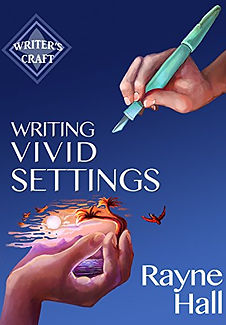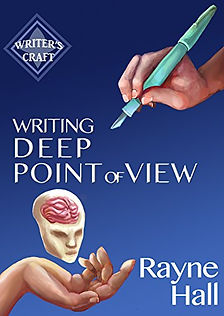I Help Good Writers
Become Great

How To USe SMELLS
for Realism And Atmosphere
Here’s a powerful technique for immersing readers into your story: use the sense of smell.

Of all the senses, smell has the strongest psychological effect. The mere mention of a smell evokes memories and triggers associations in the reader’s subconscious.
Mention a smell, and the scene comes to life. Mention two or three, and the reader is pulled into the scene as if it were real.
A single sentence about smells can reveal more about a place than several paragraphs of visual descriptions. This is useful if you aim to keep your descriptions short.
For example, the hero enters a home for old people. The place smelled of boiled cabbage, urine and disinfectant. These nine words are enough to convey what kind of old people’s home this is, and it creates a strong image in the reader’s mind.
Or try these:
The room smelled of pizza, beer and unwashed socks.
The room smelled of beeswax, joss sticks and patchouli.
The corridor smelled of mould and leaking sewage.
The kitchen smelled of coffee, cinnamon and freshly baked bread.
The kitchen smelled of burnt milk, overripe pears and bleach.
The garden smelled of lilacs and freshly mown grass.
The cell smelled of blood, urine and rotting straw.

HOW AND WHERE TO USE THIS TECHNIQUE
The best place to insert a sentence about smells is immediately after the point-of-view (PoV) character has arrived at a new location. That’s when humans are most aware of smells, so it feels right if you mention them.
Smells trigger emotions. If you want your reader to feel positive about the place, use pleasant scents. To make the reader recoil, mention nasty odours.
Also, consider the genre. Thriller and horror readers appreciate being taken to places where odours are as foul as the villain’s deeds, but romance readers want a pleasant experience, so treat them to lovely scents.
If you like, you can use this technique in almost every scene. To keep it fresh, vary the sentence structure and the wording. Here are some suggestions:
The place reeked/stank of XX and YY.
The odours of XX and YY mingled with the smells of CCC and DDD.
Her nostrils detected a whiff of XX beneath the smells of YY and CCC.
The smell of XX warred with the stronger odour of YY.
The air was rich with the scents of XX and YY.
The smell of XX failed to mask the stench of YY.
The stench of XX hit him first, followed by the odour of YY.
Beneath the scent of XX lay the more ominous odours of YY and CCC.
The scents of XX and YY greeted her.
The smells of XX and YY made his mouth water.
He braced himself against the stink of XX and YY.
PROFESSIONAL EXAMPLES
These examples show how authors have used this technique in their fiction.
The room smelled like stale smoke and Italian salad dressing. (Michael Connelly: The Poet)
I took a couple of deep breaths, smelled rain, diesel and the pungent dead-fish-and-salt stench off the river. (Devon Monk: Magic to the Bone)
The place smelt of damp and decay. (Jonathan Stroud: The Amulet of Samarkand)
A rare south wind had brought the smell of Tyre to last night’s landfall: cinnamon and pepper in the cedar-laced pine smoke, sharp young wine and close-packed sweating humanity, smoldering hemp and horse piss. (Mathew Woodring Stover: Iron Dawn)
The smell hit her first: rotting flesh, ancient blood. (Kristine Kathryn Rusch: Sins of the Blood)
The air held the warm odours of honey and earth, of pine resin and goat sweat, mingled with the scents of frying oil and spice. (Rayne Hall: Storm Dancer)
Its air was stagnant, smelling of corner must, discarded tires, and jugs of used motor oil. (Janet Evanovich: One for the Money)
The cold air reeked of cabbages and sweat. (Jason Goodwin: The Snakestone)
The air simmered with the reek of garlic and hair pomade (Lindsay Davis: The Silver Pigs)

MISTAKES TO AVOID
If the first sentence in every scene is a list of three smells, it becomes predictable and boring. Make it less obvious by varying the wording, the sentence structure and the placement.Don't overdo the bad smells, or the reader may feel such revulsion that she doesn't want to read on.
ASSIGNMENTS
1. Whatever story you’re working on right now, whatever scene you’re writing, think of two or more smells that characterise the place. Write a sentence about them, and insert it near the beginning of the
scene.
2. When you go somewhere today—to the supermarket, the dentist or the church—pay attention to the smells of the place. Write them down. If you do this for a different place every day, you'll soon have a reference—a Setting Descriptions Bank—you can draw on for future stories.
This article is based on Chapter 1 of the book Writing Vivid Settings.

